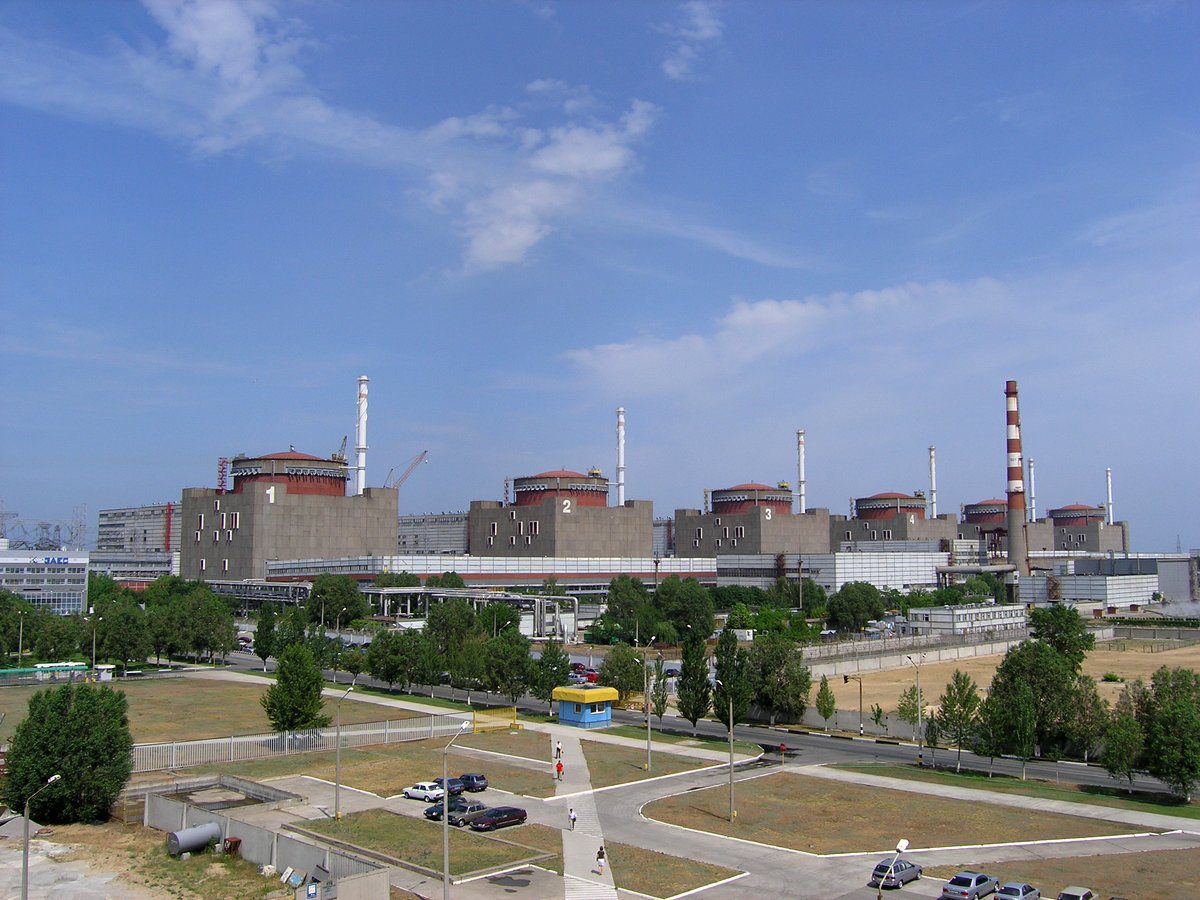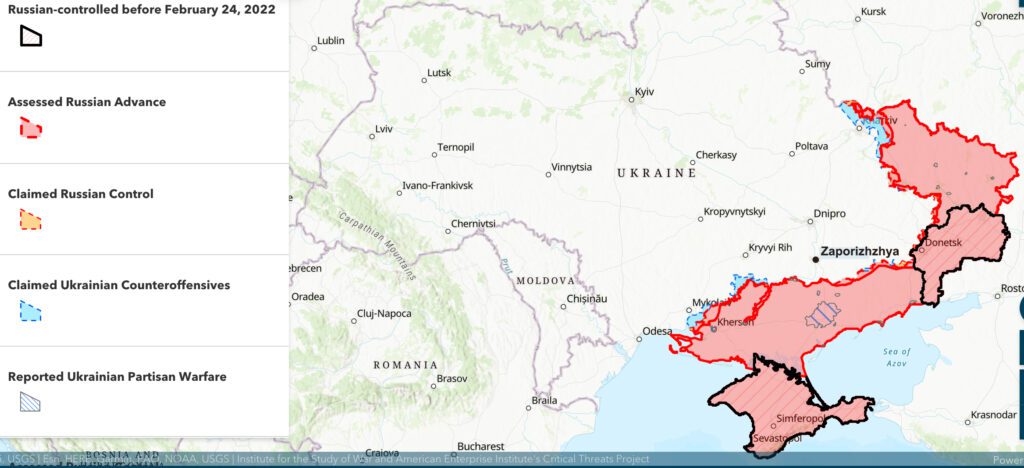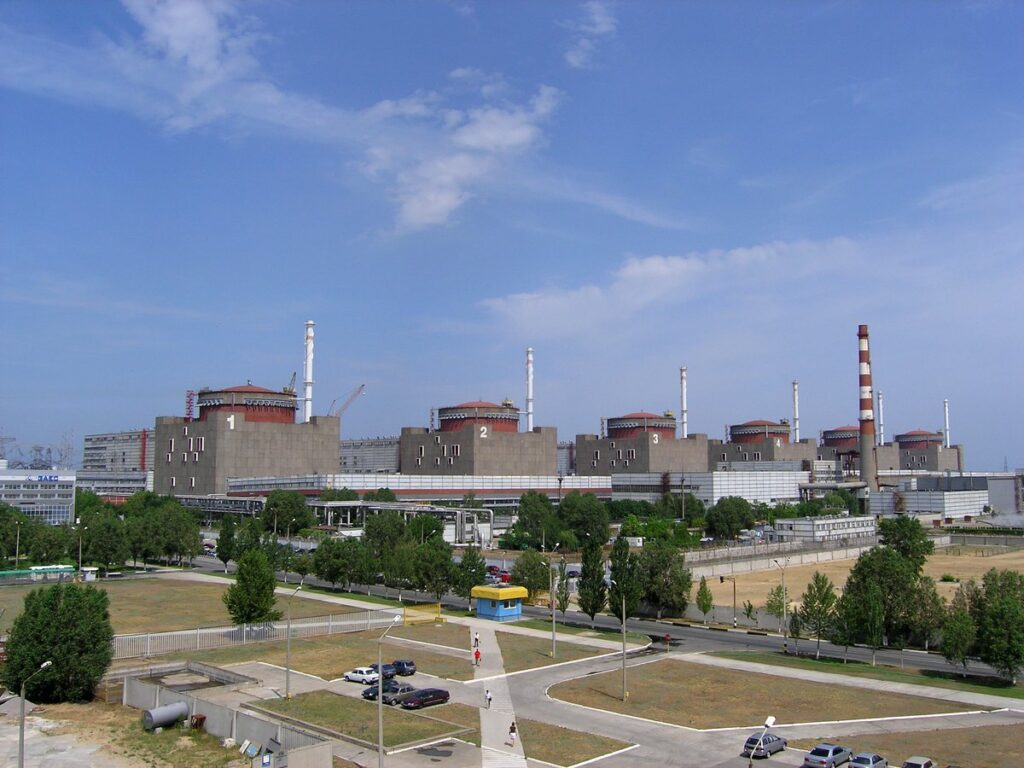IAEA Embarks on Unprecedented Mission to Inspect Nuclear Power Plant in Ukrainian ‘War Zone’
Credit to Author: Sonal Patel| Date: Wed, 31 Aug 2022 17:07:39 +0000

An expert team from the International Atomic Energy Agency (IAEA) has arrived in Kyiv and is readying to inspect Ukraine’s Zaporizhzhya Nuclear Power Plant (ZNPP) for damage from weeks of shelling. The development marks a significant breakthrough for the agency, which has for the past month pleaded with Russia and Ukraine to allow it to conduct the planned mission at the distressed power plant.
IAEA Director General Rafael Mariano Grossi told reporters on Wednesday the agency plans to spend “a few days” at the 6-GW plant. Europe’s largest nuclear power plant, ZNPP is located closest to the Russian-occupied regions of Crimea and eastern Ukraine, and sits directly in the war zone where Ukraine’s resistance is centered.
Military action in the region has intensified since Aug. 5, when artillery shelling was first reported at the six-unit plant site. Russia and Ukraine have traded accusations about who is doing the shelling and endangering the plant. While Russia occupied ZNPP in March—relatively early in its occupation of Ukraine—the nuclear plant continues to be operated by Energoatom, Ukraine’s state-owned entity, which oversees Ukraine’s 15-reactor fleet.

An Unprecedented Mission for the IAEA
The IAEA, a 1957–established United Nations (UN) autonomous organization that works to promote the safe, secure, and peaceful use of nuclear technologies, has grown increasingly alarmed by reports about ongoing military action at and around the plant. Ukraine has told the IAEA that all safety systems remain operational at the power plant, and no radiological level increases have been reported. However, the intensified skirmishes at the site have in recent weeks unveiled new vulnerabilities and underlined the risk of a potential nuclear accident at the plant, the IAEA has said.
Grossi on Wednesday again underscored the unprecedented nature of the threat, noting the inspection mission will mark the first time the agency will be going into a war zone. The IAEA may also be the first international organization to “cross the front line,” he suggested. That renders unknown difficulties to the agency’s mission, which will involve speaking to power plant personnel, he said.
While the IAEA plans to establish a permanent mission, it plans, for now, to report back on its assessment of plant damage after it completes the mission, Grossi said. The planned mission will assess physical damage to ZNPP’s facilities, determine whether the main and backup safety and security systems are functional, evaluate the plant staff’s working conditions, along with performing “urgent safeguard activities” at the site, the IAEA has said.
“These operations are very complex operations. We are going to a war zone. We are going to occupied territory, and this requires the explicit guarantees [of safety] from not only the Russian Federation, but also from the Republic of Ukraine, and we have been able to secure that,” Grossi added.

What Damage Has ZNPP Sustained So Far?
The IAEA has published regular bulletins updating the international community on damage reported—mostly by Ukraine—to ZNPP. According to those reports and other assessments, the plant—which comprises six 1-GW Russian design VVER units—has suffered notable damage.
Following is a timeline of the conflict and damage at ZNPP, along with major developments as they have affected Ukraine’s nuclear power landscape.
Aug. 5, 2022—Ukraine informed the IAEA that shelling at the plant on Aug. 5 damaged ZNPP’s switchgear at a 330-kV high-voltage transmission line, triggering an emergency protection system and prompting the shutdown of one of the three reactors that were operating at the time. A nitrogen-oxygen station and an auxiliary building were also damaged, Energoatom said. A fire was extinguished. Two of ZNPP’s six units—Units 5 and 6—continued operating, and the radiation situation was normal, Ukraine told the IAEA.
Aug. 6, 2022—A new shelling incident near ZNPP’s dry spent fuel storage (DSFS) facility caused damage to walls, a roof, and windows in the area of the DSFS, as well as to communication cables that are part of its radiation control system. Possible impact was reported on the functioning of three radiation detection sensors. However, there was “no visible damage to the containers with spent nuclear fuel or to the protective perimeter of the facility,” Ukraine told the IAEA. The incident injured a Ukrainian security guard.
Aug. 10, 2022—Ukraine said it had restored a 330-kV backup line that could be used to supply the ZNPP with electricity from a nearby facility, the Zaporizhzhya thermal power plant (ZTPP), if needed. At that point, ZNPP had four 750-kV power lines connecting it to the grid, but only two were operational. It was also unclear how much power the massive thermal power plant was producing. Owner DTEK, Ukraine’s largest private energy investor, reported being unable to send workers or fuel to the 3.7-GW coal, gas, and oil–fired power plant since Russia captured the plant in March, around the same time it captured ZNPP.
Aug. 11, 2022—Grossi warned delegates during a UN Security Council meeting that the situation at ZNPP had become “very alarming.” All seven “indispensable pillars” that are critical for nuclear safety and security—including aspects dealing with the physical integrity of the plant, off-site power supply, cooling systems, and emergency preparedness systems and measures—were reportedly compromised “if not entirely violated at one point or another during this crisis,” he said. Grossi reiterated the urgency to allow the IAEA’s technical experts to visit the area to address mounting safety concerns.
A delegate from the Russian Federation during the UN Security Council meeting claimed Ukrainian forces used heavy artillery against ZNPP on Aug. 5. Ukraine shelled the plant during a shift change “clearly with the aim to intimidate the [ZNPP] staff, that is to say, their own citizens, to prevent them from going to work, and in so doing, to undermine the normal functioning of the plant,” he said. The delegate confirmed the Aug. 6 damage to the DSFS and the automated radiation monitoring post, and the injury to the plant staff member. However, he also said renewed shelling on Aug. 7 with cluster munitions prompted a power surge in the network feeding ZNPP, which led to the disconnection of a power line to Unit 4, which was working at 10% capacity, leaving two units functioning at 50% capacity. The delegate claimed Kyiv had refused to sign a trilateral document issued by IAEA, and that Russia was strictly complying with the IAEA’s seven principles.
A Ukrainian representative at the meeting said withdrawal of Russian troops and the “return of the station to the legitimate control of Ukraine” was the only way to remove the nuclear threat at ZNPP. “Despite their public declarations, the occupiers have resorted to manipulations and unjustified conditions for the site visit,” he said.
A new round of shelling in the afternoon of Aug. 11 caused damage to radiation monitoring equipment at the plant’s fire station. Ukraine said the incident halted a scheduled shift change, but personnel rotation was back to normal. ZNPP was still operating two reactors.
Aug. 17, 2022—Energoatom announced it will build a new 1.1-GW Westinghouse AP1000 nuclear power plant at its Rivne station, a site in the north closer to Ukraine’s border with Belarus, where the country’s first VVER-400 reactors were built.“Several pre-design works have already been carried out, in particular, an analysis of the existing and prospective use of water resources in the NPP site as well as an analysis of the existing [Rivne plant] infrastructure and intersystem connections of the western region of the power system of Ukraine,” the nuclear company said. “Pre-design works were also carried out to determine the constraining geological conditions for choosing a power unit.” The project will be one of nine new power units in Ukraine using AP1000 technology. So far, two other AP1000 reactors are under development for Khmelnytskyy Units 5 and 6, which are scheduled to be completed by 2029. Rivne 5 is expected to be commissioned by 2032, Energoatom said.
Aug. 19, 2022—Ukraine told the IAEA that it had decided to make a change in the regulatory license for the ZNPP that required the Ukrainian operator to maintain Units 1 and 2 in cold shutdown. “Without a license to operate, the Ukrainian staff cannot start these reactors. Up to this point, Russia has said that the operation of the plant is under the control of the civilian Ukrainian staff,” explained Breakthrough Institute experts Rani Franovich and Adam Stein in an in-depth overview of Ukraine’s nuclear power plants. “A restart of these reactors would require Russia to take control of reactor operations, which could be a violation of Protocol II of the Geneva Convention.” At this point, Units 5 and 6 were still operating.
Aug. 22, 2022—New rounds of shelling at the plant over Aug. 20 and Aug. 21 damaged ZNPP’s laboratory and chemical facilities, though the extent was unclear. Ukraine also told the IAEA that shelling on Aug. 22 damaged the transformers of the nearby ZTPP, causing a disconnection of the 330-kV power line that linked the thermal plant to ZNPP. The disconnection lasted several hours before it was restored later the same day.
Aug. 25, 2022—Ukraine told the IAEA that owing to fires at the ZTPP, the fourth and last 750-kV power line connecting ZNPP with the Ukrainian grid had been disconnected. ZNPP’s three other external 750-kV power lines were damaged by previous shelling, it said. Though the 330-kV “backup” line linking it to the ZTPP remained connected and operational, the incident prompted the shutdown of ZNPP Units 5 and 6, causing a complete blackout at ZNPP for the first time in its history. The IAEA said ZNPP still had diesel generators, which provide access to power for cooling and other safety functions.
However, NPC Ukrenergo, Ukraine’s transmission system operator, that same day in a statement said two of the damaged 750-kV transmission lines had been reconnected and provided a reliable power supply for the balance of plant needs at ZNPP, including for its spent nuclear fuel storage. The company also said restoration efforts were underway to repair one more transmission line. “The power system of Ukraine continues to operate synchronously with the ENTSO-E network. The power loss caused by the disconnection of the Zaporizhzhia NPP is compensated, and the power grid is balanced,” it added.
IAEA chief Grossi expressed relief that the damaged lines were reconnected, but he added that the power cuts had highlighted “the potential vulnerability of a major nuclear power plant located in the middle of an active conflict zone.”
Aug. 26, 2022—At about 2:04 p.m., Unit 5 was restarted. At about 9:15 p.m., Unit 6 was restarted.
Aug. 27, 2022—Continued shelling on Aug. 26 and Aug. 27 reportedly hit the area of ZNPP’s two so-called “special buildings,” both located about 100 meters from the reactor buildings, as well as one overpass area. The IAEA said the buildings house facilities including water treatment plants, equipment repair shops, or waste management facilities. There was also damage to some water pipelines at the site, but they were said to have been repaired.
Aug. 29, 2022—Grossi in a tweet announced the IAEA will inspect ZNPP, marking a significant breakthrough for the agency.
The day has come, @IAEAorg‘s Support and Assistance Mission to #Zaporizhzhya (ISAMZ) is now on its way. We must protect the safety and security of #Ukraine’s and Europe’s biggest nuclear facility. Proud to lead this mission which will be in #ZNPP later this week. pic.twitter.com/tyVY7l4SrM
— Rafael MarianoGrossi (@rafaelmgrossi) August 29, 2022
Aug. 30, 2022—A team of IAEA experts arrived in Kyiv. Grossi met with Ukraine President Volodymyr Zelenskyy, who expressed hope that the mission will get ZNPP through security corridors. Zelenskyy said he will do everything “to avoid a global threat.”
Russian news agency TASS reported that Russia would ensure that the visit was successful and safe. The agency cited the Russian Foreign Ministry spokeswoman Maria Zakharova as saying: “We expect that the agency’s representatives, who are expected to arrive at the power plant shortly, will be able to examine the situation on the ground and in every detail, to assess the consequences of the inhumane Ukrainian strikes at the objects and facilities located at this site, and to make sure that the information being provided by the Russian side on an almost daily basis about the increasingly dangerous situation at the ZNPP and about the sources of these threats—that is the Kiev regime and its forces—is totally true.”
—Sonal Patel is a POWER senior associate editor (@sonalcpatel, @POWERmagazine).
The post IAEA Embarks on Unprecedented Mission to Inspect Nuclear Power Plant in Ukrainian ‘War Zone’ appeared first on POWER Magazine.